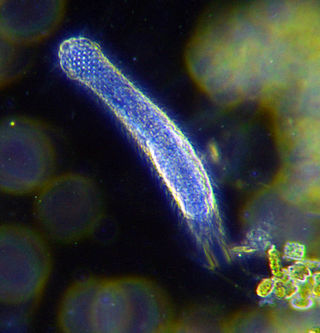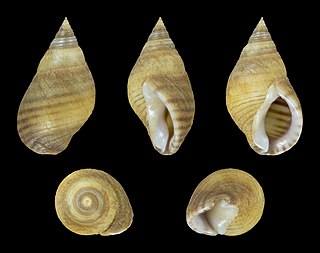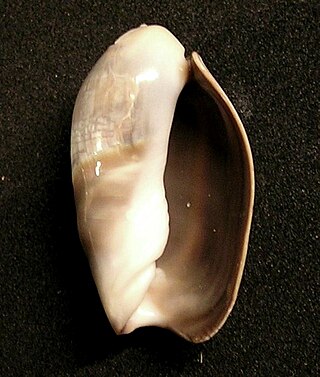
The gastrotrichs, commonly referred to as hairybellies or hairybacks, are a group of microscopic (0.06–3.0 mm), cylindrical, acoelomate animals, and are widely distributed and abundant in freshwater and marine environments. They are mostly benthic and live within the periphyton, the layer of tiny organisms and detritus that is found on the seabed and the beds of other water bodies. The majority live on and between particles of sediment or on other submerged surfaces, but a few species are terrestrial and live on land in the film of water surrounding grains of soil. Gastrotrichs are divided into two orders, the Macrodasyida which are marine, and the Chaetonotida, some of which are marine and some freshwater. Nearly 800 species of gastrotrich have been described.

Nudibranchs belong to the order Nudibranchia, a group of soft-bodied marine gastropod molluscs that shed their shells after their larval stage. They are noted for their often extraordinary colours and striking forms, and they have been given colourful nicknames to match, such as "clown", "marigold", "splendid", "dancer", "dragon", and "sea rabbit". Currently, about 3,000 valid species of nudibranchs are known.

Tellina is a widely distributed genus of marine bivalve molluscs, in the family Tellinidae. It is also known as "tellin" in English.

The Rio de Janeiro antbird is a Near Threatened species of bird in subfamily Thamnophilinae of family Thamnophilidae, the "typical antbirds". It is endemic to Brazil.

Tonna galea, commonly known as the giant tun, is a species of marine gastropod mollusc in the family Tonnidae. This very large sea snail or tun snail is found in the North Atlantic Ocean as far as the coast of West Africa, in the Mediterranean Sea and the Caribbean Sea. The species was first described by Carl Linnaeus in 1758.

Spawn is the eggs and sperm released or deposited into water by aquatic animals. As a verb, to spawn refers to the process of freely releasing eggs and sperm into a body of water ; the physical act is known as spawning. The vast majority of aquatic and amphibious animals reproduce through spawning. These include the following groups:

Aplysia fasciata, common name the "mottled sea hare", or the "sooty sea hare", is an Atlantic species of sea hare or sea slug, a marine opisthobranch gastropod mollusk in the family Aplysiidae.

Hinea is a genus of small sea snails, marine gastropod molluscs in the family Planaxidae.

Hinea brasiliana, common name the yellow-coated clusterwink, is a species of small sea snail, a gastropod mollusc in the family Planaxidae. It is native to New Zealand and southeastern Australia where it is found in the littoral zone of rocky shores. It is one of only a few sea snail species able to bioluminesce.
Volvarina brasiliana is a species of sea snail, a marine gastropod mollusk in the family Marginellidae, the margin snails.
Pachycymbiola scoresbyanum is a species of sea snail, a marine gastropod mollusk in the family Volutidae, the volutes.

Adelomelon is a genus of sea snails, marine gastropod mollusks in the family Volutidae.

Olivancillaria is a genus of sea snails, marine gastropod mollusks in the subfamily Olivancillariinae of the family Olividae.

Borsonia is a genus of sea snails, marine gastropod mollusks in the family Borsoniidae.
Arene brasiliana is a species of sea snail, a marine gastropod mollusk in the family Areneidae.

Arcinella is a genus of bivalve mollusc in the family Chamidae.
Anetarca is a genus of sea slugs, specifically of aeolid nudibranchs.
Anetarca brasiliana is a species of sea slug, specifically an aeolid nudibranch. It is a marine gastropod mollusc in the family Facelinidae.
Borsonia brasiliana is a species of sea snail, a marine gastropod mollusk in the family Borsoniidae.













